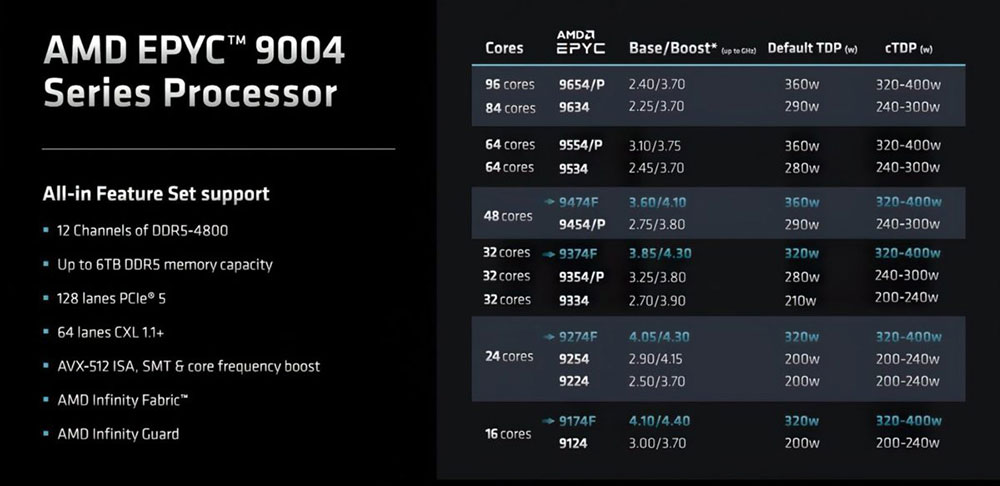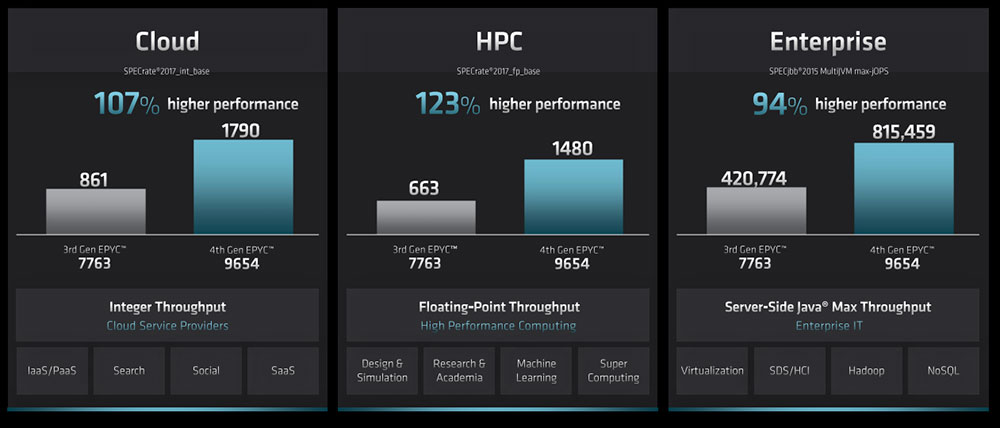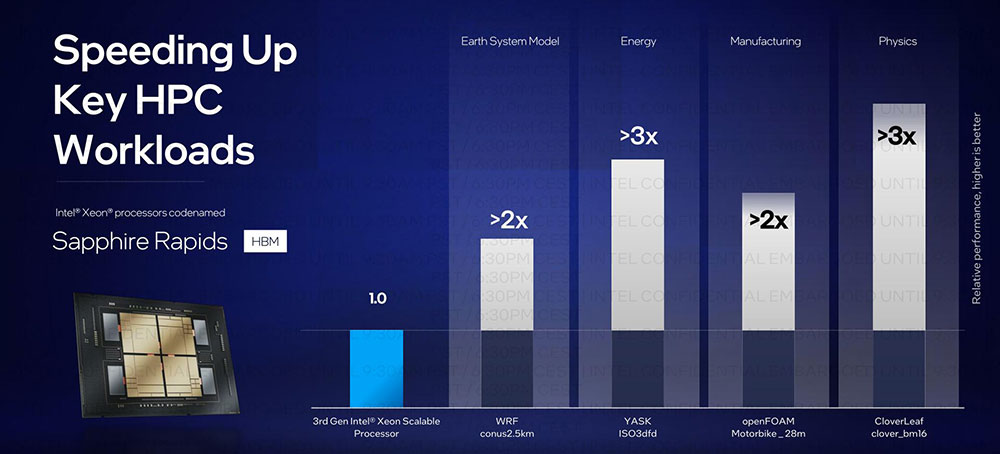As the amount of data generated worldwide continues to increase – with estimates predicting a total of 175 zettabytes or 175 trillion gigabytes of data by 2025 – the need for processors capable of handling large quantities of data becomes more urgent.
Intel and AMD play a vital role in providing the necessary components and driving innovation for this data processing. On the 10th of November, AMD released its latest CPUs, the “Genoa” line, as part of the 4th generation of EPYC server processors. Competing with AMD, the latest range of Intel Xeon processors, codenamed “Sapphire Rapids”, were launched on the 10th of January 2023.

As the flagship of the new generation of EPYC processors, the EPYC 9654 is a standout product that showcases AMD's commitment to innovation in the datacentre. The level of innovation contained within this generation of 18 SKUs is astonishing and proves that AMD is heavily investing in advancing hardware for datacentres. The EPYC 9654 boasts 96 5nm cores, 12 channels of DDR5-4800, 128 PCIe 5.0 lanes, CXL 1.1 and up to 400W power consumption.
The Zen 4 architecture has demonstrated significant improvements in benchmarks, with a 14% increase in interprocess communication (IPC). A significant proportion of this is attributed to improvements in the front-end, which now allows for two branch predictions per cycle, compared to one previously. The inclusion of AVX-512 support will also halve the load on the front-end, providing a boost for machine learning and AI workloads. Integer throughput has increased by 107%, floating-point throughput has increased by 123% and energy efficiency has improved, resulting in enhanced performance at a reduced cost to run.

And AMD is not finished innovating yet! They are also releasing the Genoa-X line-up, a new Zen 4 variant of the EPYC 7004 series, which will hit the market in mid-2023 and feature up to an astounding 1,152MB of L3 cache. Additionally, the top-of-the-range Bergamo CPU will host an impressive 128 Zen 4c cores and double the density of cores on the die at the cost of a smaller cache.

The latest Xeon processors will offer many of the same enhancements as Genoa but with a reduced core count of up to 56. The chip supports 8 channels of DDR5-4800 memory, AVX-512, AMX, CXL 1.1 and 112 PCIe 5.0 lanes. CXL uses PCIe as low latency, high bandwidth interconnects to accommodate memory expansion for hardware accelerators. It will be possible to add an additional 64GB of HBM2e, increasing the memory bandwidth beyond that of any previous x86 CPU to 1TB/s per socket. This makes the CPU ideal for HPC workloads and can result in a more than 3x increase in performance in certain benchmarks.
The base (PL1) power consumption is 350W and with turbo boost (PL2) it increases to 420W. However, the maximum power consumption that can be reached with AVX-512 is 764W. Sapphire Rapids will also feature the Intel Data Streaming Accelerator (DSA), a specialised engine designed to optimise streaming data movement and transformation operations common in high-performance storage, networking and data processing. By offloading instructions to a dedicated accelerator, the DSA helps reduce CPU utilization and improve performance.

Intel would have to increase the number of tiles on their Xeon chips in order to increase the total Golden Cove core count beyond 60 and compare with the latest AMD processors in this regard. However, Intel does support 4 and 8 socket systems and hence allows more cores per rack compared to AMD, provided that EPYC remains a dual-socket design. It’s likely that Intel’s strategy will be directed towards the segment of the market that prefers processors with smaller core counts and aim for performance gains through other means besides just increasing core count.

These next-gen processors are expected to be highly competitive in the market, offering improved performance, efficiency and features applicable to a wide range of computing applications. It will be exciting to see how demand for these processors compares once Sapphire Rapids becomes available, but for now the AMD chipsets look set to continue taking away market share from the competition.
The new processors are now available on the latest generation servers from the various BSI server manufacturers.
To learn more...
Our AMD and Intel server solutions can be viewed here and our AI servers here.
Get in touch to discover how we could optimise your business with HFT and AI.
